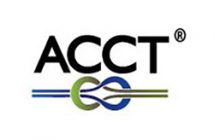Question
Recently we have been trying to find an approved AED break that will meet or exceed ASTM standards in Tennessee. We currently operate with Headrush Zipstops and the prussik on end I’d zipline as our AED. The prussik is no longer acceptable by standard. We do not have the long runways like the ziplines that use the springs. Our landing platforms are typically 6′ to 8′ with a skinny sloping ramp at the face of exit zip tower. We need an AED that will work with ZipStops and meet ADTM, ACVT, ANSI and any other acronyms I might have missed.
Dear Tennessee Zip Operator,
Great question, and one with no simple answer. Briefly, though: To meet or exceed ASTM or ACCT/ANSI standards in TN (both are accepted standards), you will need a qualified person to inspect and verify that you have an adequate Emergency Brake system. The state does not approve nor endorse specific products or devices. You will need a qualified inspector to advise you on the best way to address this concern.
Long answer: First, let’s clear up some acronym confusion. I believe that your reference to AED (Automated External Defibrillator) was meant to be EAD (Emergency Arrest Device, used by Bonsai for its emergency brake system, and by Head Rush in its current white papers). EAD is a useful acronym for a backup brake system, but neither standard setting body uses or defines this term, and thus it is only relevant to how folks choose to use it. More pertinent is the term “Emergency Brake” as defined in ACCT/ANSI standards. This is an important distinction, because what you are asking and why is complex and is important to clarify.
Keep in mind that the state of TN, as with other State or federal regulatory agencies, does not approve products for use as Emergency Braking systems. State regulatory agencies reference specific standards and manufacturers’ operating guidelines.
A good term to remember is “qualified.” Most standards refer to those who design, manufacture, inspect, and train to those standards as qualified to do what they do. Regulatory agencies require you to have your course designed, managed, maintained, and improved by “qualified” vendors.
The question I believe you are asking is, what can you plug in behind your Zip Stop to meet standards or to be compliant? Again, there is no short answer. To help understand how you can be compliant with your current arrangement, let’s look at how TN defines compliance.
For the state to approve your course and allow you to operate, you must have an annual inspection performed by a “qualified” third party vendor. If everything on your course receives a passing grade, then the state will consider you to be in good standing. They will, at some point, issue stickers to be fixed to the device that has passed.
Finding and hiring a good, qualified vendor/person is very important, because zip lines are complicated and temperamental beasts that require knowledge and expertise to properly design, install, operate, and inspect. To understand what TN is now requiring, read the ACCT/ANSI and ASTM 2959 standards and consult with a qualified person or vendor to advise you on what you need to do to be complaint in TN. ACCT/ANSI is clear on when to use an Emergency Brake system and what that means.
One possible reason for your concern about the Emergency Brake requirement is Head Rush Technology’s (HR) recent white paper (and subsequent update) that establishes the company’s position on how it wants its product supported and how it will warrant its product in the event of a product failure. Head Rush’s white papers stated the company’s interpretation of the standards, and they are helpful to those who are using HR products. Its explanation should be helpful to understanding what is currently available for zip tour operators for emergency brake systems.
To further complicate your situation: there are systems available that will help you meet the ACCT/ANSI standards, but none, to my knowledge, that also meet HR’s new white paper warranty requirements for fast zips in short distances. HR’s specific statement, “a device shall require no action by the participant or guide to engage,” sets its warranty apart from ACCT/ANSI standards.
Whether you are focused on HR warranty changes or TN current regulatory requirements, it’s essential to recognize the importance of emergency braking systems and their use on all zip lines with speeds exceeding 6 mph. Fast, long zip lines that terminate in small confines and tree platforms with many variables affecting speed require a sophisticated and well-designed approach. There is no room for error in providing adequate emergency brake distance on many of the historic fast zip line tours.
New technology, accidents, and insurance pressures—among other factors—have led to more rigorous rules regarding emergency braking in both the ASTM and ACCT/ANSI standards. For some zip lines, these new rules require changes in platform size, orientation, and zip line design, along with improved stopping and emergency backup braking technology. It’s possible that there is no single device you can “plug in” to bring your zip line into compliance; it takes a qualified vendor/inspector to determine that or to find another solution.
In short, technology and design need to catch up to current standards. There are those in the industry that have made needed corrections to how fast zip lines are designed and operated, given the challenges in body types, weather conditions, and small platforms with short stopping areas. There are smart designs and qualified designers and installers who are paying attention and working on good solutions.






